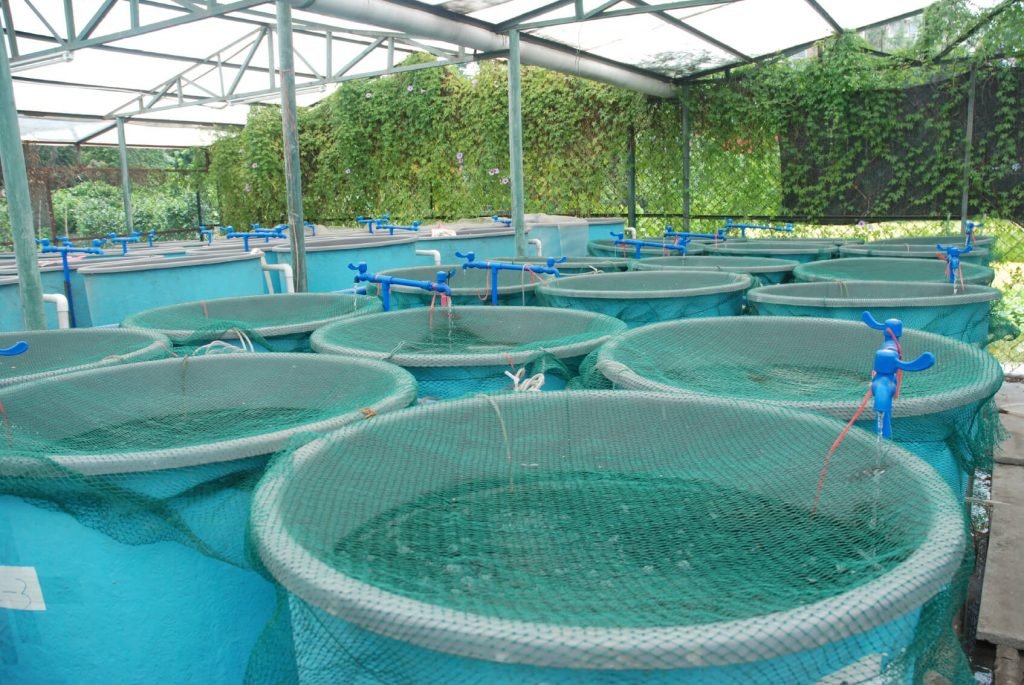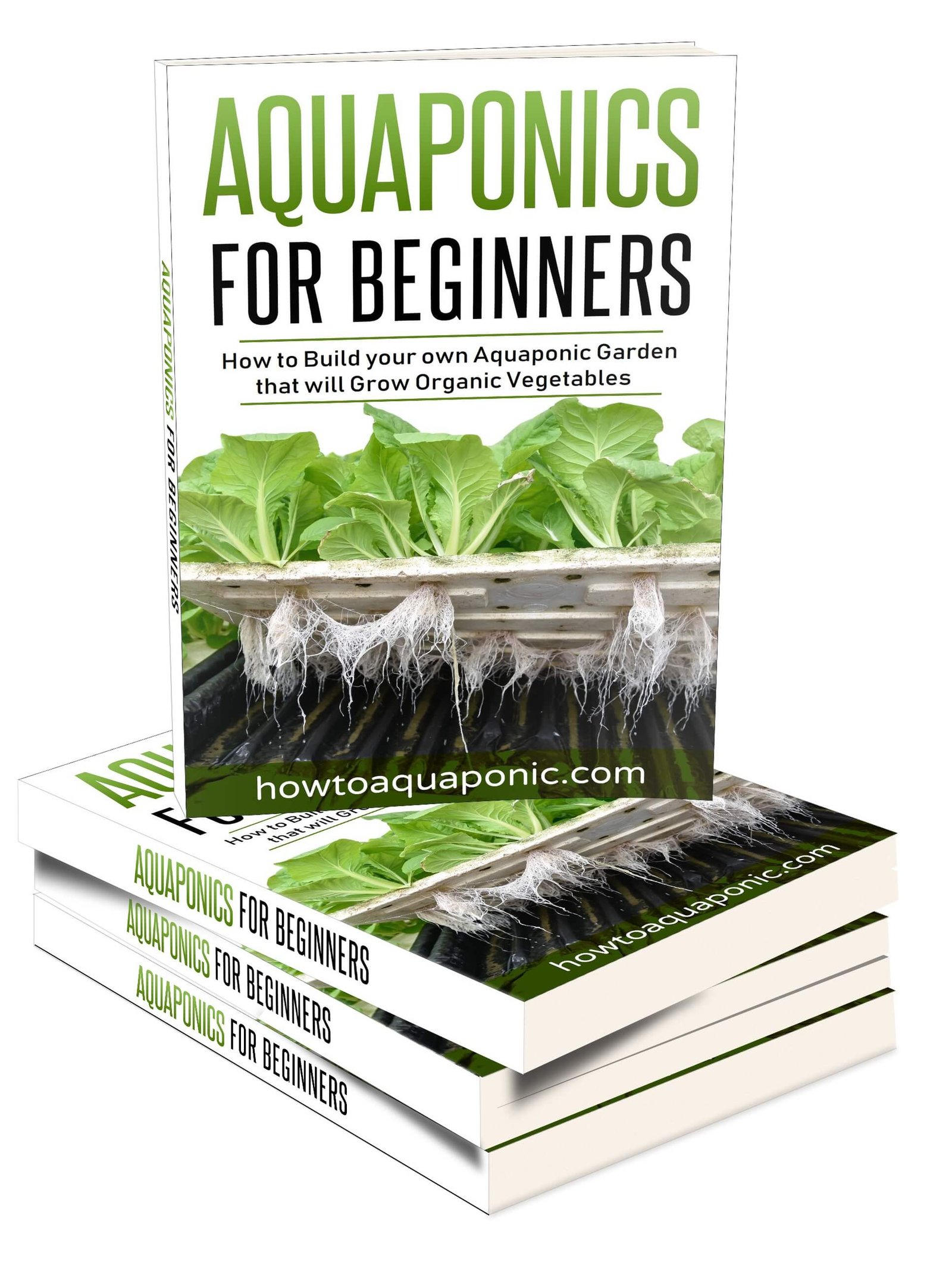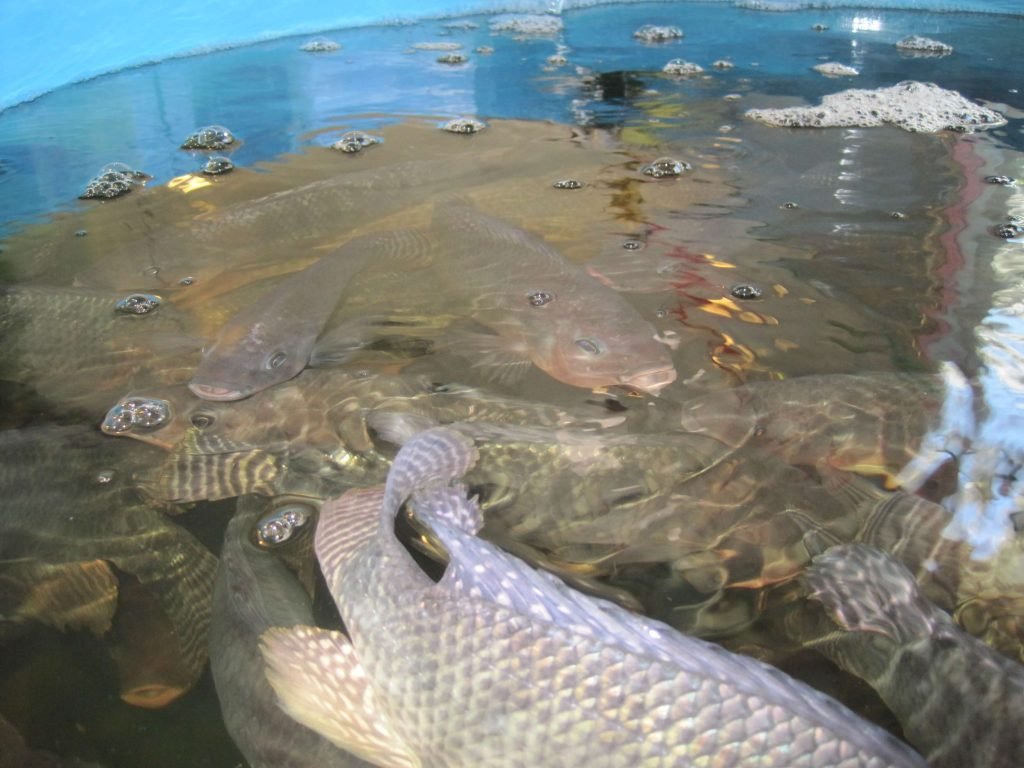Growing healthy plants through the use of fish waste is an excellent way to generate a bumper crop. Whether you’re intending to grow tomatoes or marijuana this approach can really make your life easier.
However, there are several factors you need to get right before you can start successfully running your aquaponics system.
Understanding Aquaponics
The first part is understanding the different parts of your aquaponics system:
- Fish Tank
You need somewhere to keep your fish. The fish should be kept separate from the growing area if you are using floating rafts. If they can reach the roots, they will eat the roots which will result in slower plant growth. Also, the solid waste can coat the plant roots preventing them from being able to absorb nutrients and create root rot.
Having multiple fish tanks will help with creating staggered harvests. For example, the UVI system uses 4 different tanks to house the fish. Every 6 months the fish are harvested which will result in stable nutrient availability to the plants. If you harvest all your fish in one go, your feeding rate will decrease which will decrease the nutrients available to the plants.

- Pump
The water moves from the fish tank to the growing area by gravity. After the growing area, it will go to the sump tank where it will be pumped back to the fish tank. If you need to know how to size your pump, I have made a post about it here: choosing the right pump for your aquaponics system.
You will need to cycle the water in your fish tank once every hour at a minimum.
- Filter
Technically a filter is not necessary when you have the right sizing of your growbeds. The growbeds will mineralize the solid fish waste and make it available for your plants to use. However, if you don’t have enough media to break down the solids, you need to add some kind of filtration system, increase the available grow media of your system or decrease feeding rates which will decrease stocking levels.
- Grow media
In a media bed system, the roots will be able to grow in the growing media of your choice. Read an article about choosing grow media here.
If you use deep water culture or nutrient film technique, you would need additional biofiltration.
 I have written a book that contains all the information you need to get started with aquaponics.
I have written a book that contains all the information you need to get started with aquaponics.
Don’t be the person that makes painful mistakes during your first aquaponics build!
It has 265 pages filled with information about aquaponics. It’s available in paperback or eBook format.
You can buy it here on Amazon.com
Deciding your feeding ratio
There is no such thing as the perfect aquaponics fish to plant ratio. It is different for each growing technique and kind of crop you are going to use.
Use a feeding rate applicable to your growing technique:
- Deep water culture (DWC): 60-100 grams of feed per day per square meter of growing area
- Growbeds:: 15-40 grams of feed per day per square meter of growing area
- NFT: 15-25 grams of feed per day per square meter of growing area
You need to minimize solids discharge through a solids filtration system. Solids discharge means less breakdown of solids which will lead to less available nutrients for the plants. You can use mineralization to convert the fish waste to usable nutrients.

Fish to plant ratio in Growbeds
I’m going to explain this using a simple example.
If you are using growbeds, you need to size your growbeds so they can process the waste of your fish entirely.
Let’s say you want to have three growbeds (each 4ftx4ft) with a recommended depth of 12 inches and hydroton as a growing media.
You will need to feed your fish 15-40 grams of fish feed per day per square meter.
The three growbeds have a combined grow area of 3 square meters.
You need to feed 45 to 120 grams per day to your fish.
Use 45 grams if you do not discharge solid fish waste and 120 grams if you discharge solid waste to your garden.
Using this ratio, your leafy greens won’t show nutrient deficiencies. Growing more nutrient hungry plants like tomatoes need more fish feed (40 grams).
Now you need to find out how much fish is going to eat these 45 grams of fish feed per day.
Tilapia is known to be fast growing and to have a good feed conversion rate (FCR). They have a conversion rate of 2 which means they will need two pounds of fish feed to grow to one pound. They will grow from fingerling to one pound in 6 months.
45 grams x 182 days (6months) = 8,190 grams. You would need to supply 8,190 grams of fish feed (8.19kg) to grow tilapia in six months.
Now you need to find out how much fish that is.
From the previously mentioned feeding conversion rate, we know that two pounds of fish feed produce one pound of fish.
Convert grams to pounds by dividing by 454.
8,190/454= 18 pounds of fish feed.
Now divide it by the FCR (feed conversion rate) of 2.
18/2= 9 pounds of fish.
If you grow them out to be one pound you can stock 9 fish (9/1).
If you grow them out to be one pound and a half you can stock 6 fish (9/1.5).
Tilapia needs two gallons of water per pound of fish. This is different for each fish species. For example, trout needs 8 gallons per pound.
Now, going with the example of tilapia, you will need a fish tank of 18 gallons minimum. Tilapia grows better is densely stocked tanks because they will not chase each other and become stressed.
Fish to plant ratio in DWC or NFT
If you want to calculate the fish to plant ratio on deep water culture or NFT you will need to change the feeding rate.
Conclusion
There is no one set fish to plant ratio, it depends on:
- The type of system you are going to use
- How much grow area you have
- The type of plant you are cultivating (leafy greens or fruiting crops)
- The temperature of the water to optimize for nitrification
Read more:
- Best plants for Aquaponics
- Best fish for Aquaponics
- How to choose the right pump for your aquaponics system

Nick loves building, managing and giving others advice on aquaponics. He created this website to do just that. He is the author of Aquaponics for beginners. If you got a question contact him here or read more on the about page here.
